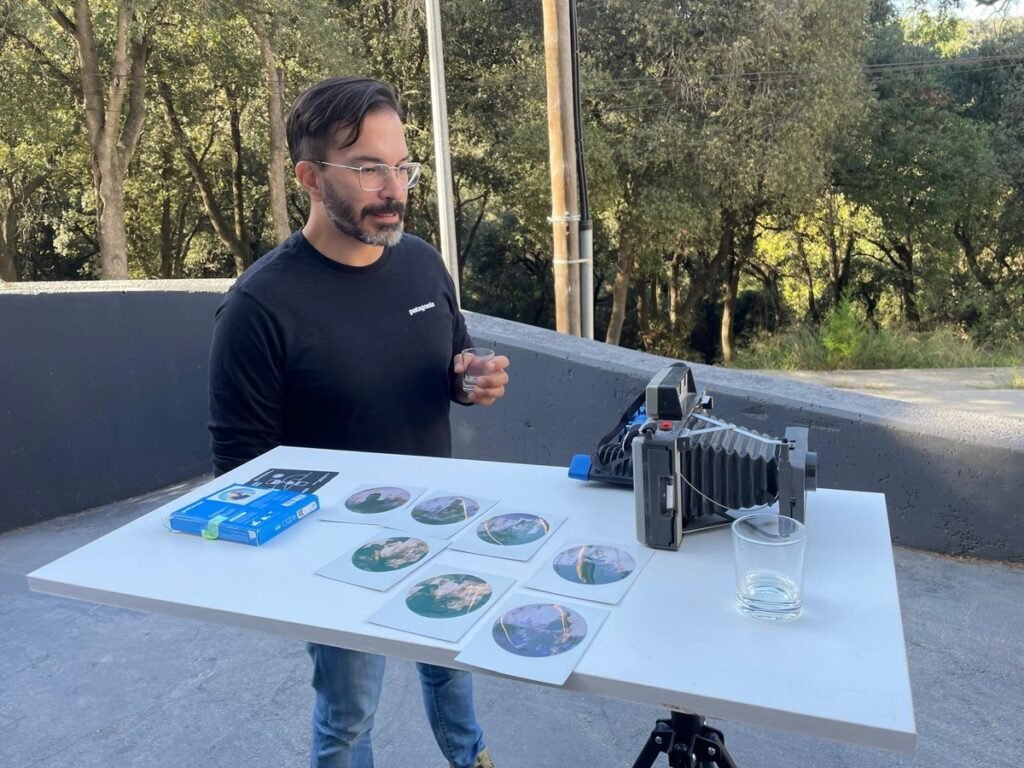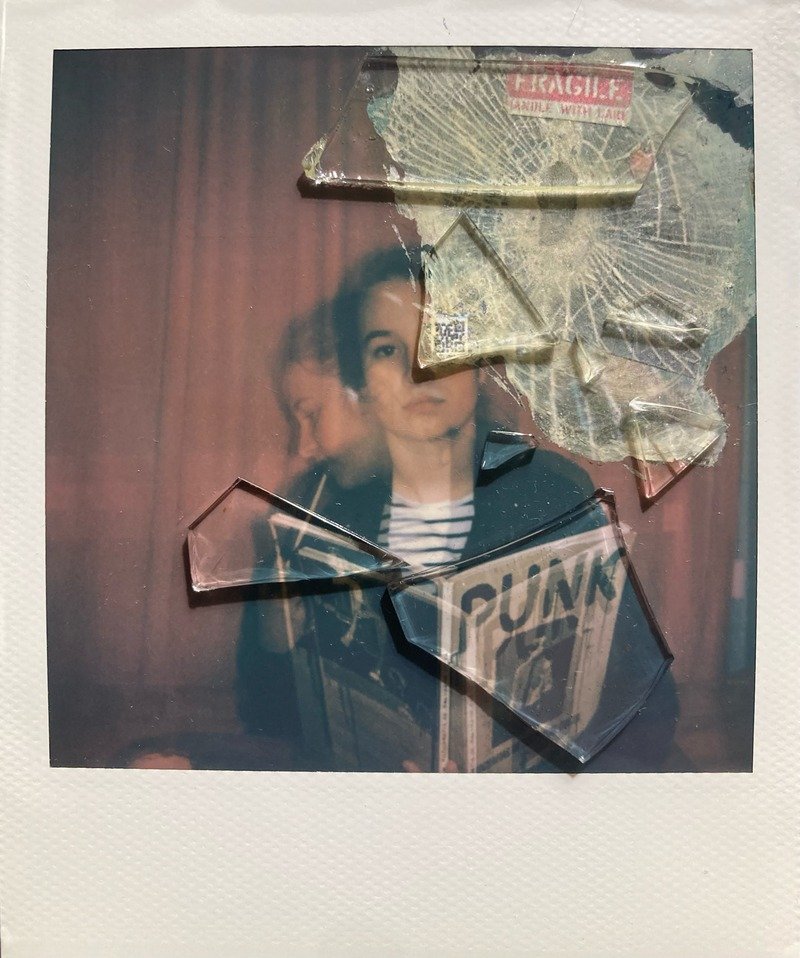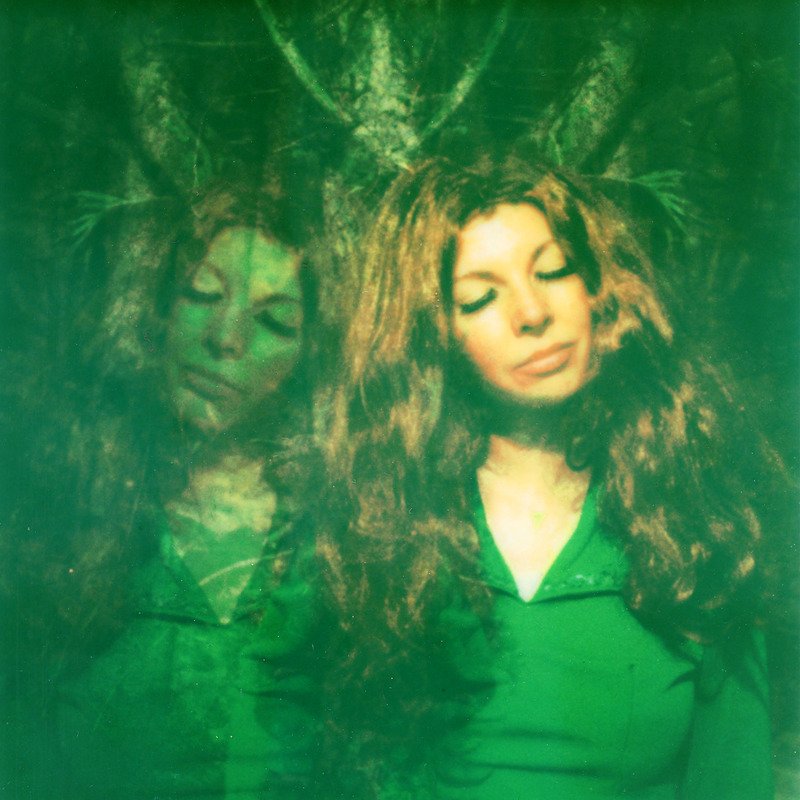Some stories start with a bang. This one began with a second-hand Polaroid camera and a blurry photo. What followed was not only a career shift—it was a whole philosophy built around imperfection, experimentation, and a deep belief in the power of fleeting moments.
What draws someone into a medium that fades over time? Maybe it’s the rebellion against perfection, or maybe it’s the pull of a process that mirrors life itself—unpredictable, messy, and full of unexpected beauty.
In the world of instant photography, what’s temporary becomes timeless, and what’s raw becomes radiant. Through this conversation with Andrés Aguilar Caro, we get a glimpse into the mind of someone who’s carved out a community, a platform, and a purpose around this ever-evolving art form. It’s not about chasing nostalgia—it’s about chasing meaning, wherever it appears, however briefly.
Hi Andrés. Can you briefly tell us about your background and how you ended up in the world of instant photography?
I began photography while studying journalism, but I quickly became disillusioned with how journalism was evolving in the 21st century. That led me to focus on documentary work, and I started freelancing as a photographer and editor for international media. In 2010, a friend gave me a Polaroid 320. I started bringing it along to gigs, where I was photographing musicians. I didn’t overthink it, I just shot. I loved the double exposure trick. It became my favourite scene, with everything blurry but still making sense, creating this visual game through movement. That’s still my style today, even if I’ve added more experimental techniques over time. I kept buying cameras, and today I probably own around 40. It’s a healthy addiction. In 2013, I left freelancing behind to focus on my personal project, Instant Photographers. It began as Polaroid of the Day, and it has since grown into a cultural and artistic platform to support both amateur and professional instant film photographers. It’s all about art, deeply personal expression and photography as the core purpose.

You’ve described your first experience with instant film as a bit of a flop. What made you give it a second chance?
The unpredictability of it. I wasn’t satisfied, but I couldn’t stop thinking about the result. Everyone calls this format magic or speaks about its immediacy, but to me it felt more like something ephemeral that lasts just a little longer than it should. These images age with time. I know people who scan their instant pictures every few years to document how the chemicals and paper evolve. That first moment slowly transforms into something else, becoming a portrait of passing time, just like how our memories fade.
What is it about instant photography that keeps you hooked more than a decade later?
It’s the connection to people’s sensitivity. Many artists use photography to express, to heal, to connect with emotion. That’s how I see it now. Not just as art, but as a human connection. Often, with very few words, a photo can make two people understand each other deeply.
“Creation doesn’t come from comfort, it comes from that sudden spark when the work reflects something meaningful.“
You’ve talked about a “brotherly” bond with the artists you meet—how has the instant film community shaped your personal or creative life?
More than a brotherhood or community, I’d say we are a network. We all learn from each other. Sometimes we fight like siblings who’ve borrowed a favourite shirt without asking, but it’s always out of curiosity and respect. There are more traditional photographic societies that feel almost like religious spaces, closed in their ritual but never closed off to others. I encourage people to visit exhibitions wherever they are, to speak to the artists, to get close enough to “smell” the work. That’s how you really experience what we do.
You have an exhibition coming up in Barcelona, Instant Flashes, Urban Traces. What sparked the idea for this exhibition?
It came from a personal moment last year, reflecting on my rebellious punk teenage years and the role counterculture played in shaping who I am today. Over time I’ve come to see that after destruction comes creation. That idea resonates with me now as a father of two. There’s chaos, but there’s also beauty and hope in what we rebuild. I’ve never liked seeing artists grow cynical with age. Life is too beautiful for that. This is the message I want to share. Creation doesn’t come from comfort, it comes from that sudden spark when the work reflects something meaningful. That’s what I look for, both in curation and when I write about an artist I admire.
Has curating content for Instant Photographers Magazine influenced how you approach physical exhibitions?
Definitely. This Barcelona exhibition is actually my fifth curatorial project. I’ve also been a juror and a consultant on many others. I love the process of seeing an initial idea evolve over time. I don’t just curate, I get involved. I learn from the artists, and I do it out of passion. One of the parts I enjoy most is guiding visitors through the shows, explaining the creative process behind the works. I love making that connection between the artist and the public.

This show lives at the intersection of instant photography and street art—two mediums that vanish as quickly as they appear. Why bring them together?
It connects back to what I said earlier. I grew up in a strict, conservative Catholic environment. My punk years were a reaction to that, a form of resistance. That energy still drives me. Instant photography and street art are both ephemeral. They exist outside traditional systems, and they speak loudly in the moment.
“I’m not an idealist, but I do believe in a better world made of small gestures.“
Curating ephemeral art seems like a paradox. How do you frame the fleeting without freezing it?
I’ve said it before, I don’t like using the word “magic.” What matters to me is the emotional effect that art has on those who experience it. The energy that radiates from a piece when it really connects, that’s the hook. That’s what motivates change, when different sensitivities come together. I’m not an idealist, but I do believe in a better world made of small gestures.
What kind of reaction do you hope the audience walks away with—confusion, curiosity, nostalgia?
I want people to feel that emotional power, to see art as a spark for positive change. Of course, we’re far from a society where change happens overnight, especially in these politically turbulent times. But when have things ever been stable? Humanity has lived through destruction for centuries. And yet, in the middle of that, there’s always beauty, positive feelings, and life. We can do better. That’s what I hope people take from this show.
You’ve said your work only makes sense because of the artists who inspire you. Can you give us any examples from this group in particular?
Yes. Polaroscope’s wild experimental textures, Clare Bailey’s bittersweet nostalgia, Anika Neese’s minimalist poetry. Each of them brings something deeply personal. The exhibition is just a frame that lets these different voices meet and speak to each other.


Can you share one piece from the show that took you by surprise or challenged your expectations?
If I told you, I’d ruin a surprise I’ve prepared for the reopening during the Experimental Photo Festival. But I’ll say this. What surprised me was the connection between the artist and the artwork. We tend to think the piece is created in the studio, but the truth is the work stays alive. It moves, breathes, and even carries a scent. That’s something I felt very strongly with Mila Nijinsky’s work. I met her last year at Studio Baxton in Brussels. Her photography blends with nature, with roots and earth, turning each image into a small hiding place that somehow survives, echoing how the planet pulses through the heart of the artist.
And finally, for those of us who want to follow your work or dive deeper into the world of instant photography, where should we look?
Our website, instantphotographers.com, is a good place to start. But Instagram is where the project really breathes. Every day, we receive around a hundred messages from people sharing their work. We hand-pick images and post them as part of a kind of living gallery. It’s one of the most beautiful parts of what we do, discovering all this work and sharing it. That moment when we see it resonate with others is magical. Everything we do only makes sense because of the artists. They are the reason it all matters.



Thanks for your interest in art & creativity on FrikiFish— a one-woman labor of love, providing free content and services to artists, art-lovers and creative projects in-and-around Barcelona. This project runs on caffeine and community love, please consider supporting with a donation or a cup of coffee. Thank you!